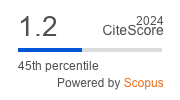Pharmaceutical development of sangviritrin spray for the treatment of inflammatory diseases of the oral cavity
https://doi.org/10.33380/2305-2066-2025-14-1-1851
Abstract
Introduction. One of the most common bacterial infections includes acute and chronic tonsillitis, affecting 10 to 15 % of adults and approximately 20–25 % of children worldwide, according to the World Health Organization. The focus of this study was an original substance, sangviritrin, containing no less than 96.5 % of the sum of bisulfates of two alkaloids: sanguinarine and chelerythrine. Given the high antimicrobial activity of sangviritrin, the research aimed to develop a local delivery system based on this medicinal substance.
Aim. The aim of this work was to develop an oral medicinal form of sangviritrin.
Materials and Methods. Sangviritrin, produced by the All-Russian Scientific Research Institute of Medicinal and Aromatic Plants, was used as the active pharmaceutical ingredient. The selection of auxiliary components was carried out in accordance with the methodologies specified in the State Pharmacopoeia XV edition. The organoleptic properties of the substance and spray samples were studied using A. I. Tenzova's method. The local irritant action of the spray was assessed using the conjunctival test method on chinchilla rabbits weighing 3.5–4.3 kg. Quantitative determination of sangviritrin in the medicinal form was performed using spectrophotometric methods at a wavelength of 321 ± 2 nm on a spectrophotometer SPECORD® 200 PLUS (Analytik Jena GmbH+Co. KG, Germany).
Results and Discussion. Optimal auxiliary component compositions were selected based on measurements of spray technological parameters. A comprehensive approach was justified for correcting the organoleptic properties of the substance, involving the introduction of a minimal amount of sweeteners and additional use of β-cyclodextrin. Examination of the local irritant action indicated a "weak or absent" degree of local irritation.
Conclusion. A local delivery system for sangviritrin has been developed for the treatment of infectious and inflammatory diseases of the oral cavity.
About the Authors
M. N. AnurovaRussian Federation
8/2, Trubetskaya str., Mosсow, 119991
Ya. A. Dorokhina
Russian Federation
8/2, Trubetskaya str., Mosсow, 119991
A. S. Gulenkov
Russian Federation
7/1, Grina str., Moscow, 117216
N. B. Demina
Russian Federation
8/2, Trubetskaya str., Mosсow, 119991
L. A. Korol
Russian Federation
8/2, Trubetskaya str., Mosсow, 119991
P. G. Mizina
Russian Federation
7/1, Grina str., Moscow, 117216
References
1. Mikhaleva T. V., Zakharova O. I., Ilyasov P. V. Antibiotic Resistance: Modern Approaches and Ways to Overcome it (Review). Prikladnaia biokhimiia i mikrobiologiia. 2019;55(2):124–132. (In Russ.) DOI: 10.1134/S0555109919020119.
2. Seleznev K. G., Okun O. S., Dolzhenko S. A., Andreev P. V., Klimov Z. T., Kanaeva E. A. Rehabilitation of Patients Who Have Suffered Acute Streptococcal Tonsillitis as a Prevention of Chronic Tonsillitis Development. Vestnik gigieny i epidemiologii. 2019;23(1):21–24. (In Russ.)
3. Pavlova G. V., Martiusheva V. I. Secondary prevention of chronic tonsillitis exacerbations by bacteriophage medications. Vestnik otorinolaringologii. 2019;84(2):46–49. (In Russ.) DOI: 10.17116/OTORINO20198402146.
4. Vichkanova S. A. Clinical Study Data on the Antimicrobial Plant Preparation Sangviritrin. Russian Medical Journal. 2012;2:75. (In Russ.)
5. Bortnikova V. V., et al. Study of the Immunomodulatory Properties of the Drug Sangviritrin. Untraditional Natural Resources, Innovative Technologies and Products. 2016;23:162.
6. Domnina Yu. M., Suslov V. V., Kedik S. A., Volkova P. O. Approaches to the Development of a Low-dose Naltrexone Preparation in the Form of a Nasal Spray (Review). Drug development & registration. 2021;10(1):37–47. (In Russ.) DOI: 10.33380/2305-2066-2021-10-1-37-47.
7. Abrosimova O. N., Pivovarova N. S., Burakova M. A., Shebitchenko T. S. Development of Technology and Composition of the Medicinal Product for Oral Cavity Based on Phytosubstances. Drug development & registration. 2021;10(4):37–45. (In Russ.) DOI: 10.33380/2305-2066-2021-10-4(1)-37-45.
8. Kirzhanova Е. А., Khutorianskiy V. V., Balabushevich N. G., Kharenko А. V., Demina N. B. Methods for Analyzing of Mucoadhesion: from Basic Research to Practical Applications in Dosage Forms Development. Drug Development & Registration. 2014;3(8):66–81. (In Russ.)
9. Amorós-Galicia L., Nardi-Ricart A., Verdugo-González C., Arroyo-García C. M., García-Montoya E., Pérez-Lozano P., Suñé-Negre J. M., Suñé-Pou M. Development of a Standardized Method for Measuring Bioadhesion and Mucoadhesion That Is Applicable to Various Pharmaceutical Dosage Forms. Pharmaceutics. 2022;14(10):1995. DOI: 10.3390/pharmaceutics14101995.
10. Zheng X., Wu F., Hong Y., Shen L., Lin X., Feng Y. Developments in Taste-Masking Techniques for Traditional Chinese Medicines. Pharmaceutics. 2018;10(3):157. DOI: 10.3390/pharmaceutics10030157.
11. Liu T., Wan X., Luo Z., Liu C., Quan P., Cun D., Fang L. A donepezil/cyclodextrin complexation orodispersible film: Effect of cyclodextrin on taste-masking based on dynamic process and in vivo drug absorption. Asian Journal of Pharmaceutical Sciences. 2019;14(2):183–192. DOI: 10.1016/j.ajps.2018.05.001.
12. Moutasim M. Y., ElMeshad A. N., El-Nabarawi M. A. A pharmaceutical study on lornoxicam fast disintegrating tablets: formulation and in vitro and in vivo evaluation. Drug Delivery and Translational Research. 2017;7(3):450–459. DOI: 10.1007/s13346-017-0367-6.
13. Anurova M. N., Bakhrushina E. O., Demina N. B. The problem of taste masking of drugs. Drug Development & Registration. 2015;4(13);64–73. (In Russ.)
14. Tolkachev O. N., Savina A. A., Kopylova I. E., Okhotnikova V. F., Kachalina T. V., Bykov V. A. Sangviritrin: Chemical and Technological Studies of Benzophenanthridine Alkaloids (Review). Voprosy biologicheskoy, medicinskoy i farmacevticheskoy himii. 2011;2:19–27. (In Russ.)
15. Jabbar M. L., Mahboba J. H., Meazher N. Comparing the effectiveness of topical dexamethasone emollient, lidocaine gel, and glycerin emollient on the endotracheal tube for postoperative hoarseness of voice, sore throat, and laryngospasm. Journal of Medicine and Life. 2023;16(6):904–907. DOI: 10.25122/jml-2022-0137.
16. Lopalco A., Manni A., Keeley A., Haider S., Li W., Lopedota A., Altomare C.D., Denora N., Tuleu C. In Vivo Investigation of (2-Hydroxypropyl)-β-cyclodextrin-Based Formulation of Spironolactone in Aqueous Solution for Paediatric Use. Pharmaceutics. 2022;14(4):780. DOI: 10.3390/pharmaceutics14040780.
17. Loftsson T., Saokham P., Sá Couto A. R. Self-association of cyclodextrins and cyclodextrin complexes in aqueous solutions. International Journal of Pharmaceutics. 2019;560:228–234. DOI: 10.1016/j.ijpharm.2019.02.004.
18. Muankaew C., Saokham P., Jansook P., Loftsson T. Self-assembly of cyclodextrin complexes: detection, obstacles and benefits. Pharmazie. 2020;75(7):307–312. DOI: 10.1691/ph.2020.0405.
Supplementary files
|
|
1. Графический абстракт | |
| Subject | ||
| Type | Other | |
View
(908KB)
|
Indexing metadata ▾ | |
Review
For citations:
Anurova M.N., Dorokhina Ya.A., Gulenkov A.S., Demina N.B., Korol L.A., Mizina P.G. Pharmaceutical development of sangviritrin spray for the treatment of inflammatory diseases of the oral cavity. Drug development & registration. 2025;14(1):160-170. (In Russ.) https://doi.org/10.33380/2305-2066-2025-14-1-1851









































